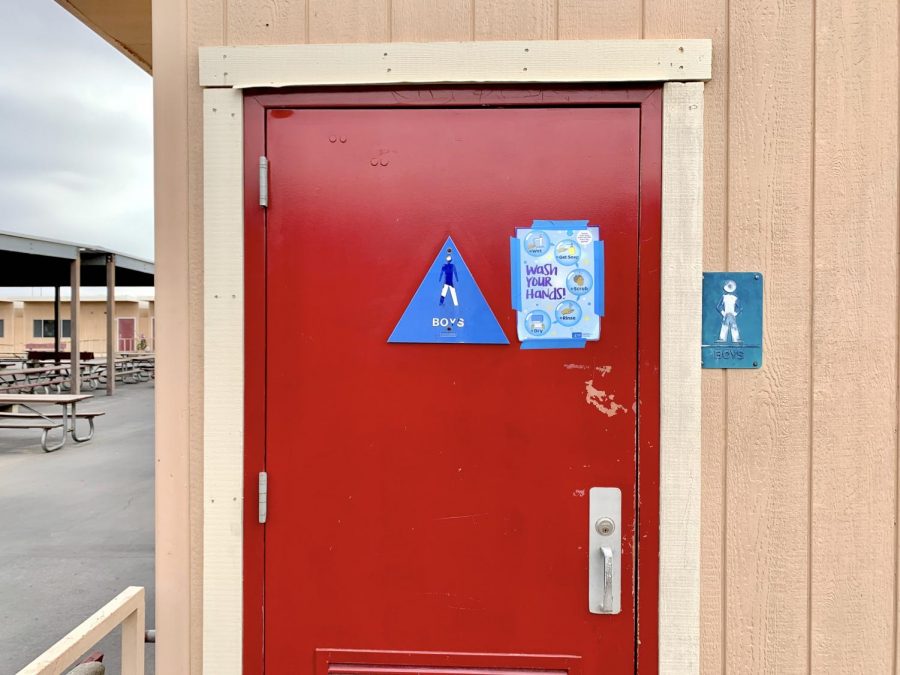Gender-Neutral Restrooms: Wasteful or a Room for Waste?
January 26, 2021
Shawn Abbate, the current facilitator of communication between various LBUSD departments, conducted a focus group at Wilson High School on November 16 to gather the input of students on the future of gender-neutral bathrooms on campus.
As the Measure E Liaison, Abbate connects the “Facilities Development and Planning Department, Operations, Maintenance, Technology, Nutrition, Transportation and school sites.” Part of the LBUSD Campus Improvements Building on Success program, Abbate collaborates with students who find interest in construction activities around campus, and is currently working with the school district to create all-gender inclusive facilities. While discussing the reason for these new spaces, the instructor stated that it is created as “a safe space for people who might be otherwise uncomfortable.”
Introducing the meeting to the Bruins, Abbate informed the Wilson focus group of the Equity Centered Design process.
“We’re looking at what are some of the problems that we have with current single-gender spaces.”
Although gay and transgender rights have been advocated for throughout history with infamous icons such as Sylvia Rivera and Marsha P. Johnson in the 1960s, gender-neutral restrooms have gathered more attention in the past few years, since the rise of awareness of the difficulties of transgenderism and gender identity in the 2000s. Many high schoolers today became familiar with the term in 2015 when Caitlyn Jenner came out as a transgender woman. As a result, Generation Z has been exposed to the LGBTQ+ community since adolescense, meaning that netiher transgender, non-binary, or gay is a foreign term for high schoolers in 2021.
As of the 2019-20 school year, Wilson students who were not comfortable using neither the boys or girls restrooms located in the school hallways were able to go to the nurse’s unlabeled restroom in the 100 building. However, students found an issue with this, as they argued that going to an area of the school that treats sick people was not an appropriate place for students who simply do not find comfort in the gender-labeled restrooms.
Abbate reported to the focus group that in the current gender-labeled restrooms on the Wilson campus, there are nine-inch gaps on the bottom of the stalls, allowing more than enough room for an invasion of privacy. Discomfort is not uncommon in such vulnerable spaces, as even those who identify with their natural-born gender reflect uneasiness in the majority of restrooms on campus.
“The bathrooms at lunch aren’t always the most welcoming due to the large crowds, so smaller, more secluded bathrooms might be something to consider” stated a student from the focus group who wanted to remain anonymous.
New restrooms are planned for construction in the 100 and 300 buildings on campus, where stalls would tower at eight feet tall with only a one inch gap at the bottom of the stall. Individual restroom facilities were also discussed at the meeting, where greater privacy would be given to students at the expense of fewer toilets. These would be more secure for not only students who seek gender-neutral restrooms, but also for the average Bruin who finds discomfort in the current crowded restrooms.
In a similar notion, there are also concerns regarding the current standard of locker rooms. In such a defenseless space, the current standard justifiably creates discomfort for Wilson students.
“I only used our locker rooms for a year, but I do remember feeling as though we were very tightly packed together in the row,” said a student in regards to the current locker rooms.
In the powerpoint shared by Abbate, “Privacy is a concern for many students faced with the prospect of communal showers and large undifferentiated changing areas. It would seem that most individuals – irrespective of their gender identity and expression – don’t want to change in the open or bathe in gang showers.”
With talk of new construction on campus, locker room prototypes have been constructed with more walls to secure the privacy of students. In the locker rooms, more individual changing stalls would be provided.
Although creating safer and more comfortable spaces for Wilson Bruins should always be a priority, school construction has little control over the mind of the people who use the facilities.
“When I first came out as lesbian in middle school, when I went to the bathroom I was told I made people uncomfortable. Both in the bathroom and the locker room,” stated an attendee of the focus group Zoom meeting.
Repressed bigotry towards the LGBTQ+ community unfolds in such vulnerable scenes. Although it is standard practice to mind your own business in restrooms and locker rooms, people still feel they have the right to judge, even in these defenseless areas.
“I’ve been in situations where girls feel uncomfortable changing with me because they think I’ll have a crush on them or something. It makes me feel weird and uncomfortable,” an attendee of the focus group with Abbate stated.
Instead of promoting a spiral of embarrassment by deflecting prejudice onto others, acknowledging internal discriminating thoughts would promote a more accepting, welcoming, and trusting environment for everyone. While building up restrooms walls would ensure security for individuals in the Wilson hallways, establishing a fundamental mindset of inclusivity and acceptance outside of Wilson would encourage safe and secure restrooms for Bruins even after they leave the campus.
Rather than looking to contractors to solve student problems, individuals must redefine their own standard of “normal” to one more accepting of those different from themselves. Updating school restrooms is a great first step to increased inclusivity and privacy to ensure the comfort of all Bruins, but it is up to the students to establish a sense of safety in school restrooms, because that is something that building an eight foot wall will not be able to complete.

